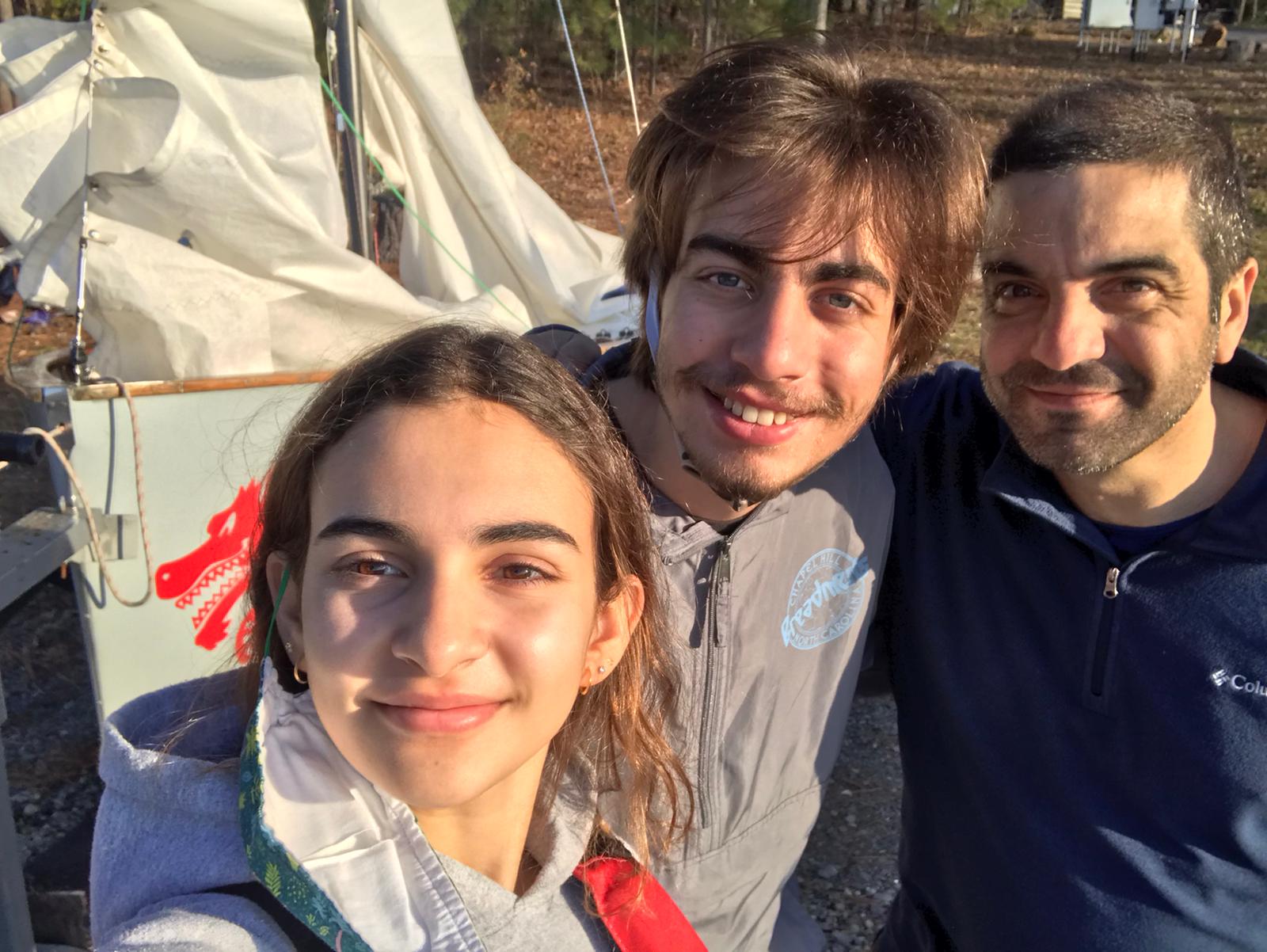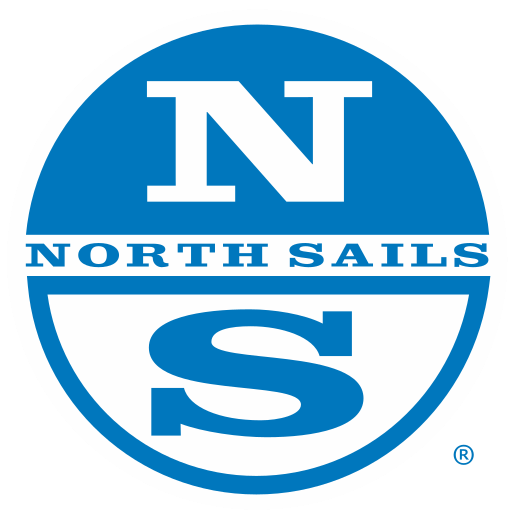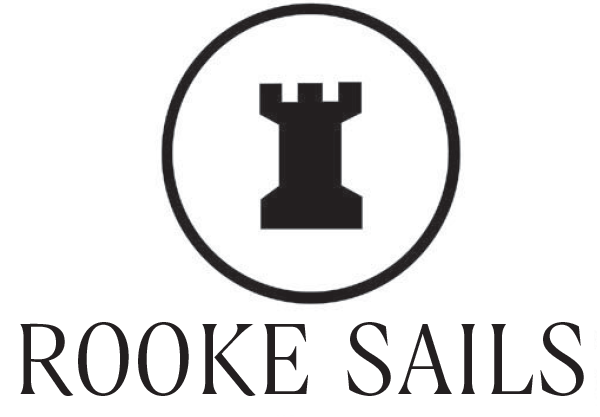TCA STRATEGY PROCESS AND SUMMARY
TCA Strategy Development Process
Several people have asked why and how the TCA strategy was developed. The why is simple. Organizations like the TCA need to evolve to meet the changing needs of their members and keep pace with changes happening in the world in which they operate. A proven vehicle for meeting these challenges is to develop a “long-term” strategic plan which provides a vision for what an organization wants to become and outlines specific actions or projects to undertake to realize the vision. A long-term plan is proactive. It is based on near-term realities that are highly likely but also considers scenarios that may come to pass in the future.
The Strategic Plan development began in September 2022. The Executive Committee informed the Governing Board and then met in-person in November for a two day working session.
Process Overview
The process used for the TCA strategy has been used for 35+ years in businesses around the world. The process consists of five steps:
- Assess external environment
- Develop a vision
- Define and prioritize projects to realize vision
- External review
- Final draft
These five steps are interdependent and build on one another. The ExCom completed the first three steps during the onsite workshop held on November 5, 2022. All members of the ExCom participated (two connected by Zoom). The final two steps were completed between December 2022 and February 2023.
Step 1: The process began by assessing the external environment: one-design sailing, in this case. We all have a unique view of what one-design sailing looks like today. The same is true when we try to anticipate what sailing might look like in 2030. The purpose of the assessment of the external environment is to collect a broad range of perspectives from industry experts, combine those with our own perspectives and build a single view of the future that the Class will use to guide their strategic plan. These assessments are never perfect, but they do serve to focus the strategy beyond the immediate near term.
ExCom members collected data by interviewing sailmakers, boat builders, hardware manufacturers, electronics firms, college coaches, high school coaches, community sailing directors and other one-design organizations. ExCom members also solicited input from Thistlers during the fall regatta season. They collected research from McKinsey & Company, Boating Industry magazine, and Pew Research Center, to name a few, and gathered TCA member demographic info. Raw data collection took about two months. The ExCom distilled the raw data into an external vision during the onsite workshop.
Step 2: The next step was to define what we want the Thistle Class to look like in 2030. We used a brainstorming process to build a draft 2030 vision, compared the draft vision to the external environment for validation, and then refined it via a group discussion.
Step 3: Once we had a vision, we needed to assess what projects would be necessary to realize the vision. Rather than jumping right into defining the projects, we assessed the TCA strengths and weaknesses via a brainstorming exercise. We then built a list of projects that would help the Class realize our vision. After compiling the list, the group prioritized these projects. Following the initial prioritization, the group discussed the projects relative to our strengths and weaknesses and refined some project definitions and priorities.
At this point, the basics of the strategy were complete. During November, the ExCom converted our bullet points from the onsite meeting into a written draft of the external environment and Vision.
Step 4: On November 25, we invited the rest of the Governing Board (18 individuals) and 11 other members of the Thistle Class to comment on the strategy document. Both groups received access to the preliminary strategy document on December 2. When the comment period ended in mid-January, we integrated the input from the Governing Board and Class members into a final Strategy Document.
Here’s how a few of the participants described the external review process:
- “I received a draft document, which I reviewed and commented on over the course of a few weeks. Comments were added by various class members, and each individually addressed or modifications made, as needed, based on responses. While I don’t necessarily agree with every aspect of the strategy document, my feedback was heard and incorporated as appropriate. I felt very involved in the process and appreciated the board’s timely feedback.” – Sara Paisner, TCA member
- “I was a part of the months long review process for the thistle class strategic plan, while juggling being a new parent I read the long document put out by the ExCom. Input was added and modifications were made by the governing board . Through the regular review process and votes by the governing body the plan was passed and is a reflection of the anticipated challenges one design sailing will see in its future.” – Scott Meyer, Niagara Frontier District Governor
- “I thought my voice was heard as a 32-year-old in the class who’s been here since I was 18. The document itself was well-written, and my comments were helpful to the process. The people writing the strategy tried to incorporate what we were thinking. You can tell that because it talks about keeping boats affordable, keeping older boats alive, showing the new people that they can become better with practice and time while also having fun in the class. We do want Thistle sailing to be better in 10 years, and we’re putting that effort in with this strategy.” – Tim Vining, Lake Erie District Governor
- “I found the process to be quite collaborative, despite the fact that we were spread out across the country and participating virtually. The ongoing ability to comment on the document, and on other people’s observations, resulted in a generative process that allowed all of us to be able to draw out new ideas from each other and bring out a wider spectrum of thoughts and opinions. It really was eye opening! And it was also inspiring to think of all the ways that our class is unique and how we can draw on our strengths to bring in new sailors and ensure the TCA continues to grow and remain strong for generations to come.” – Jess Murphy, TCA member
Step 5: The Governing Board received a link to the final Strategy Document on February 20, 2023. The Strategy was approved on March 2, 2023, by a vote of 20-0.
We believe that this process successfully combined the facts, wisdom, and forward thinking offered by many people, resulting in a strategy to grow and strengthen the Thistle Class Association in the years ahead.
Implementation
The key to moving this Strategy from paper to reality is a well-developed implementation. The ExCom is developing an implementation plan for the projects identified in the Strategy. We’re excited to share that plan once it’s complete and draw on the strengths of our members to drive the Class toward our 2030 vision.
TCA STRATEGY SUMMARY
Contents
- One Design Environment 2030
- Thistle Class 2030 Vision and Goals
- Thistle Class Strategic Projects (in priority order)
One Design Environment 2030
Demographics
Between now and 2030, the Thistle Class Association can anticipate losing 26-28% of its members, if we assume most members will drop out of the class, or at least drop out of racing, at the age of 70. Members that leave Thistle racing will be replaced by the next generation which is 13% smaller in the general population and 19% smaller in the TCA population. Without proactive steps, the TCA membership will shrink by 20% or more over the next 8 years.
One-design classes will have 3 groups of people to attract for growth. These groups, collectively, will produce enough potential members to replenish and grow the Thistle Class, but we will need new approaches and programs to attract and retain them. Junior sailors in high school and college will represent a steady-state group who may come from yacht clubs (declining numbers), community sailing programs (growing numbers) or school based programs (growing numbers). Recent college graduates will represent a major pool with approximately 880 annual graduates from schools within 30 miles of active Thistle fleets. Adults (21-35) who sailed earlier in their lives but stopped due to work and/or young families will represent a smaller but attractive pool of sailors. Based on national demographics, sailors joining one-design fleets in the next eight years will be more diverse (60% women, less than 50% white, small but growing non-binary population) than has been seen in the last 40 years.
Finances
The National economy in the next eight years and the personal financial situation of potential sailors will significantly determine whether they continue to sail and how they engage with the sailing community. Young adults (21-30) may wait longer to commit to owning and campaigning a boat than in years past since the cost of boats, storage, and yacht clubs will continue to increase. Some young sailors will be attracted to community sailing and racing programs which overcome many of the barriers of boat ownership. Additionally, since the cost of yacht clubs continues to rise, more of the young one-design sailors will not have a club and/or fleet affiliation.
Social Factors
Between now and 2030, social forces will significantly impact one-design sailing. Sailors will continue to commit to classes where they have established relationships and that are appealing to all sailors (women, LGBTQ+, non-white) alike. 20 to 30 year old sailors will want to see people their same age active in the class and a class organization that lines up with their lives, values and expectations. Maintaining close communications with new sailors, using communications tools that they use in their daily lives, will be critical to maintaining the one-design community. One-design communities need to be agile to adapt to new communications tools as the technology evolves and are adopted by the young sailors.
Training and Technology
Helping new sailors develop their skills in the Thistle will continue to be critical to attracting and retaining new sailors in one-design classes. New sailors will be attracted by the exceptional levels of competition in a class and the willingness of the top skippers and crew to share their knowledge. Since more sailors will be unaffiliated with fleets, training opportunities will need to include personal sessions at regattas as well as using training technologies that are rapidly evolving to engage and develop new one-design racers.
Boats and Fleets
The financial situation of new young sailors will be consistent with entry and mid-level boats that are sub $10,000. Foiling and sport boats are exciting but the cost of acquisition will limit the number of young one-design sailors who can afford to make these their primary boat to own. College sailors will be attracted to performance boats that reward boat handling skills and classes that have strong, nationally recognized competition. Active local fleets will be a dominant draw for new sailors, especially if the fleet has an active promoter/organizer to keep things dynamic. People will come for the sailing but stay for the party. Classes with fleets in centers with growing young populations will flourish in the next eight years.
Racing Venues and Race Management
By 2030, there will be fewer venues hosting regattas, greater competition for racing venues and likely higher costs associated with available venues. Membership in yacht clubs will gray, membership numbers will decline and costs will increase. Some yacht clubs will move from sailing clubs to power boat clubs, while others may limit their hosting of outside events. Notably, some clubs may become unusable due to climate change and sea level rise in the next eight years. Clubs will have fewer race volunteers to manage regattas, further reducing venue availability and races may be run with smaller volunteer staff. As seasoned race volunteers retire, there may be a decline in race management skills. Technology will play a greater part in race management from automated OCS calls and notification to automated mark placement. Technology may allow smaller race management teams to run regattas, however safety boats will still be required.
Thistle Class 2030 Vision and Goals
Vision:
By 2030, the Thistle Class will be the strongest one-design centerboard class in the USA, appealing to juniors, young adults, young families and mature sailors alike.
Goals
The Class will have at least 50 active fleets across the country with more than 750 paid memberships. The Class will be averaging 3% annual growth and be adding 5-10 brand new Thistles to the fleet each year. Growth will occur while maintaining a family focused, inclusive culture that balances fun and competition. To support these values, the Thistle Class will ensure that there is high quality child care at all blue chevron events as well as major regional events and that membership remains open to all sailors.
Fleets will be the cornerstone of our strength and the primary source of growth. They will use programs designed by the Class to attract 20-35 year old sailors as skippers and crew in their fleet. Fleets will see increasing populations of junior sailors, and young adults including women and LGBTQ+ members from diverse racial communities. Most fleets will have a fleet mentor, who is supported by strong regional and national leadership, responsible for overseeing fleet activities and growth. Many fleets will have fleet boats (partially supported by the class) to provide easy access for potential new members. The Class will have a boat loan/lease-to-buy program designed to provide a steady supply of quality boats for new members of the Class.
Staying connected to Thistle sailors, and potential Thistle sailors will be a major focus of the Thistle Class, using communications tools that meet the needs of our membership. These communications tools will allow members (skippers and crew) to stay connected even if they are not proximal to other boats or fleets, as well as reach college sailors, sailors in other classes, and community sailing programs. The Bagpipe will be nationally recognized as the best one-design class publication, serving to share information, document class decisions and expose yacht clubs and community sailing programs to the Thistle Class.
Competition in the Thistle Class will continue to be exceptional, with national and world champions from many classes, sailmakers, coaches and other industry professionals routinely participating in local, regional and national events. Many boats will be sailed by family members, and the Class will have increasing numbers of boats with all junior, and/or all female crews at local to national level regattas. The Class anticipates that the average age of attendees at the 2030 Nationals near 40 and that more than half the sailors will be juniors, female, transgender, LGBTQ+ and/or identify as a minority.
Coach TCA will become a nationally recognized training program that allows sailors to continuously improve their skills with time in the boat, coaching from experienced sailors, and using both in-person and online sessions. Coach TCA will provide mentoring for all sailors at all levels, focusing on skills and developing strong, lasting relationships. Coach TCA will be led by a paid, part-time coach who will manage online and in-person coaching, engaging top Thistle skippers and crew (pros and non-pros) to provide expertise. Coach TCA will routinely deliver at least five regional programs designed for women, three programs designed for juniors, and 10 online sessions for the general membership using state-of-the-art video teaching tools.
The boat will continue to be a critical component of the value the Class offers to new sailors. The Class’s strict adherence to one-design principles will keep all boats (old and new) competitive. The Class will continue to support our primary builder, and will foster two regional ‘rebuild’ centers to repair and upgrade older boats, thus ensuring a steady supply of low cost, high quality Thistles. The Thistle Class will continue to revise our specifications and measurements so as to make the boats easier to sail, cheaper to maintain, and longer lasting.
The Thistle Class will be governed in accordance with the Thistle Class Constitution and Bylaws. These documents will be updated as required to ensure the health of the Class and to ensure that the Class management requirements fits the family friendly, fun philosophy of the Thistle Class. The Class will be supported by an endowment program and a national level sponsorship program. These programs will allow the Class to keep regatta costs and Class membership fees at affordable levels. The sponsorship program will support specific programs aimed at juniors, women, LGBTQ+ and minority sailors through a diversity and inclusion program.. The funding programs will be used to support the boat loan/lease-to-buy program, and the fleet boat acquisition and maintenance costs. These funds will also allow the Class to expand Coach TCA with part time staff and to support community sailing programs with Coach TCA resources.
The Thistle Class will lead the one-design community in protecting the land and sea. Being a Platinum Level Class, we will seek to have more than 90% of our regattas certified as Clean Events through Sailors for the Sea. Our ‘clean regatta’ guidelines will ensure our events are environmentally responsible, but will also teach host clubs how they can begin or strengthen their journey to cleaning up our environment.
Thistle Class Strategic Projects (in priority order)
High Priority Projects
- Brand and fund Coach-TCA, with a planning team for topics, dates, formats, locations
- Develop a key event management plan
- Develop diversity and inclusion plan (multi year)
- Develop plan to promote small/medium yacht clubs to kick off community sailing programs
- Develop and fund financial support model (diversity and inclusion items)- categories and funding model
- Achieve sustainable funding model for the Class (corporate sponsorship, etc)
- Plan to promote and support fleet boat for every fleet, including budget – study existing models
- Generate list of successful growth strategies to share with fleets
- Review our governance, for long term consistency and efficiency, people and process, timing of terms
- Plan to standardize guaranteed childcare across clubs and different regattas and decide TCA portion of funding
- Create an infrastructure to connect boat, skippers, crew for local, regional and National events.
- Create a mentoring program to help new sailors with all aspects of the boat (rigging, regatta prep, tuning, racing, running events, etc)
- Create a Strategy Implementation Plan, reporting to the President, to ensure that there are long term follow through on the initiatives.
Additional Projects Identified
- Develop framework for college nights (connect fleets to college sailing)
- Find a suitable multi-channel communication tool and develop implementation plan
- Build development program for women of TCA (to move from crew to skipper) Tie to community sailing model.
- Refresh and expand a crew development program that acknowledges that many crew want to be full time crew with no aspirations to skipper.
- Connecting fleets to middle schools – for fun and potentially for STEM education, especially with populations that don’t typically come into sailing
- Bring in advertising to TCA media (long term team)
- Full time TCA marketing plan
- Incremental, evolutionary electronics plan – what’s onboard, how to use it for learning, race management for key events
- Layout 5 year plan for boat evolution
- Create a plan to monitor the class culture and ensure that it is supported and strengthened at all costs!





